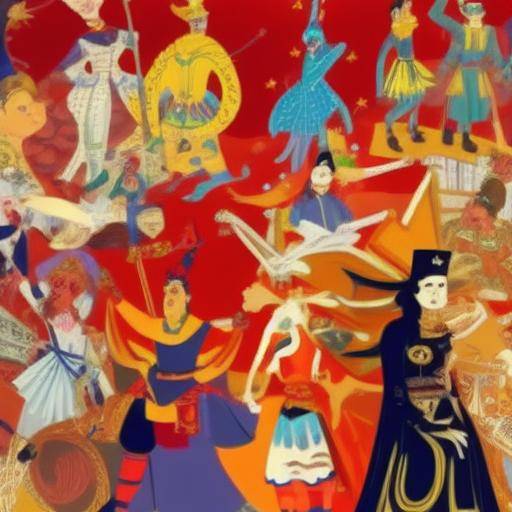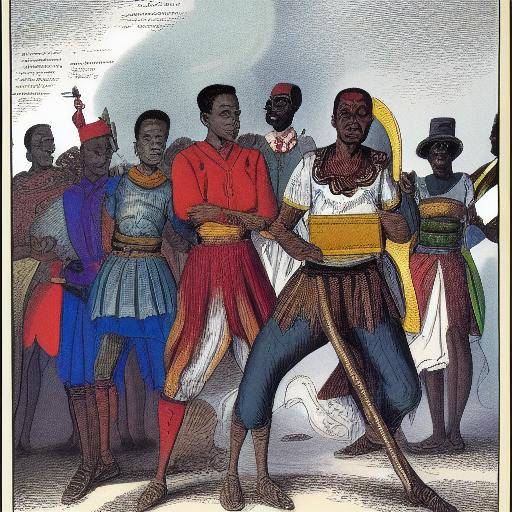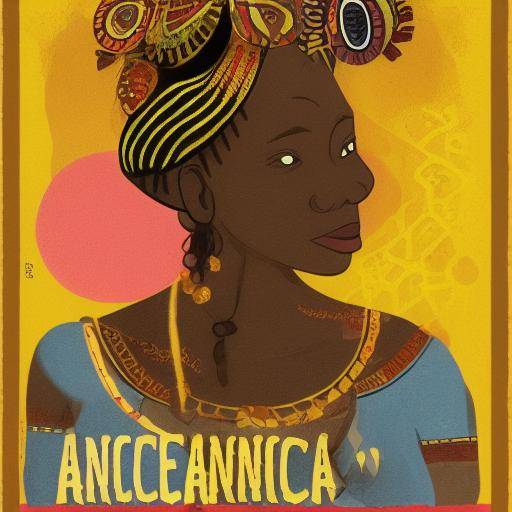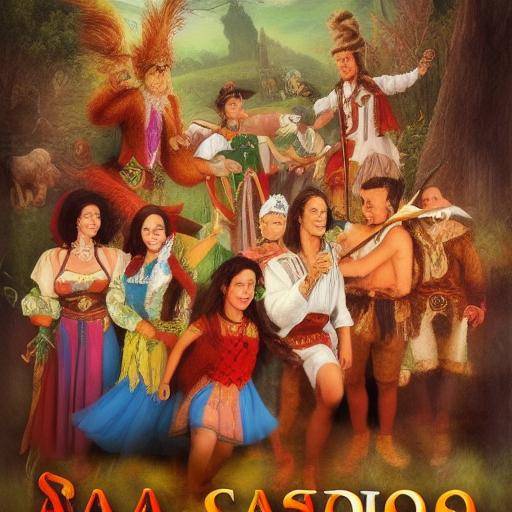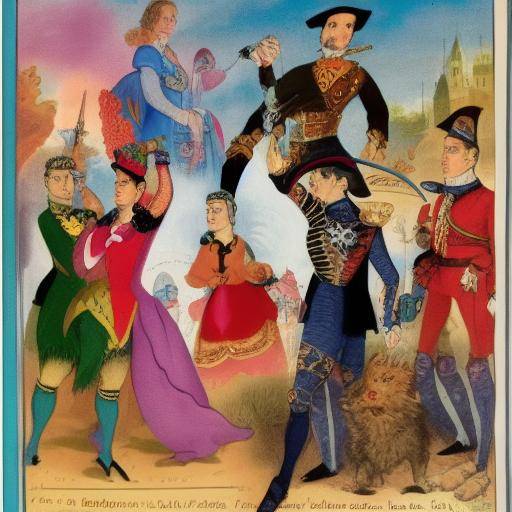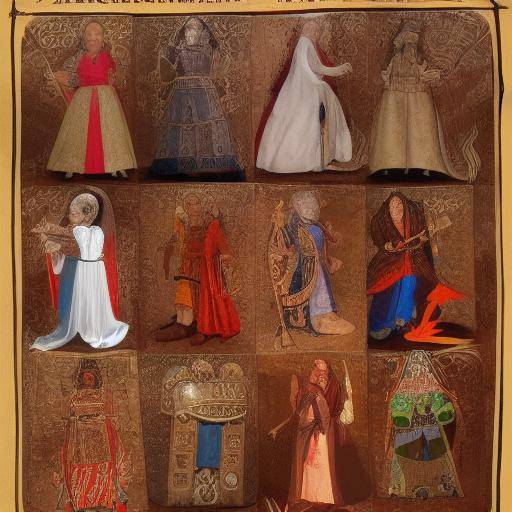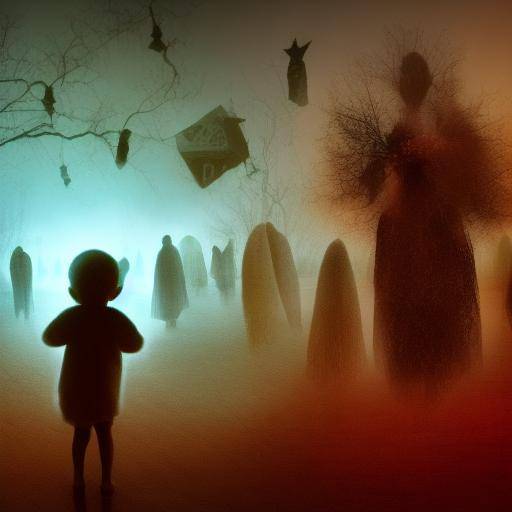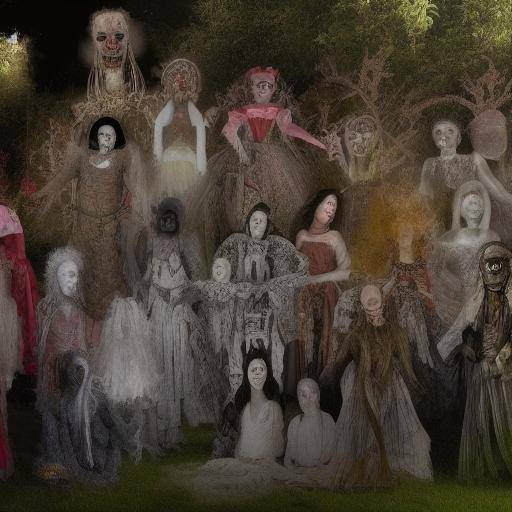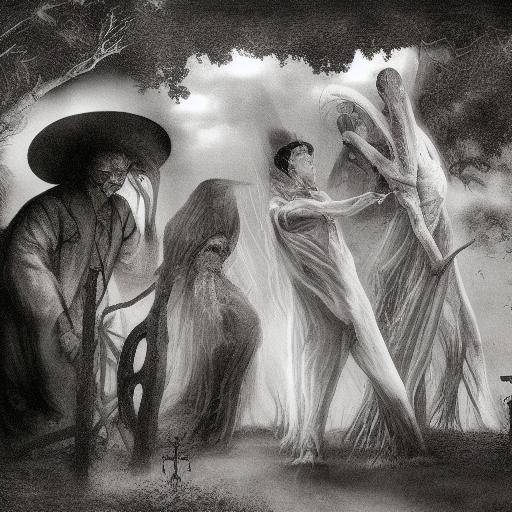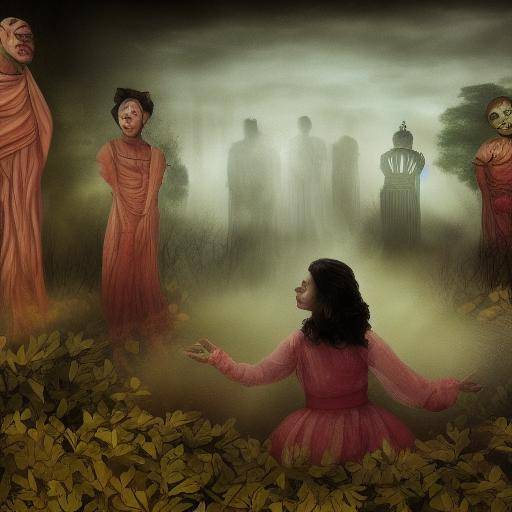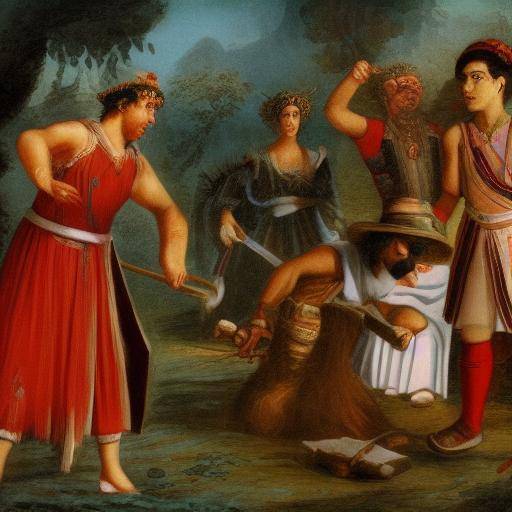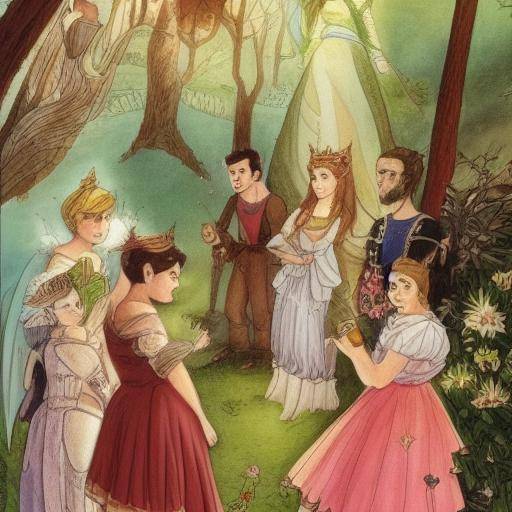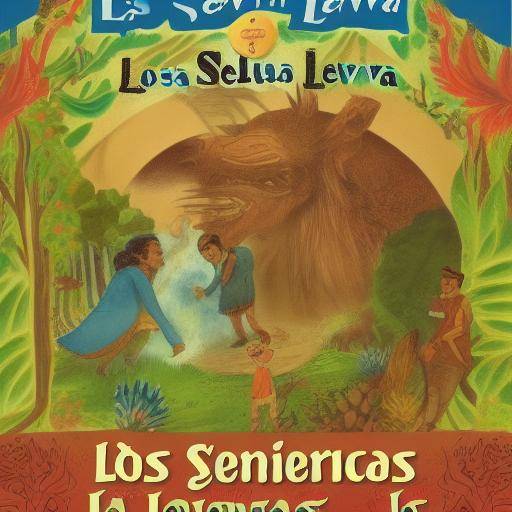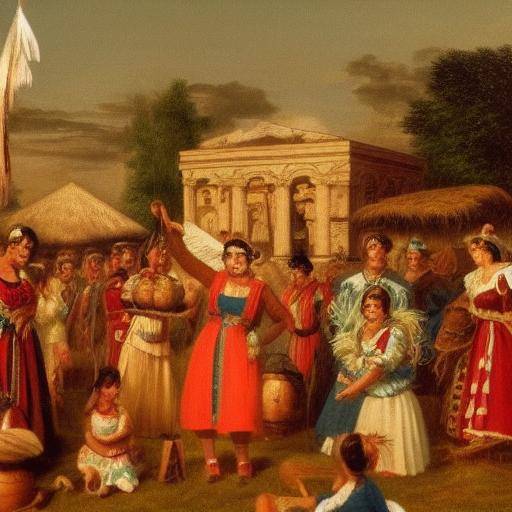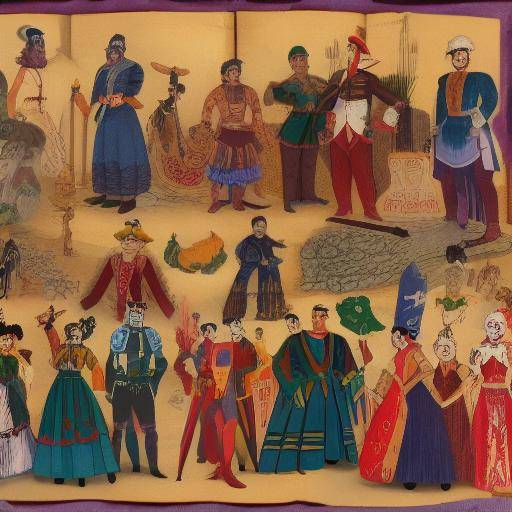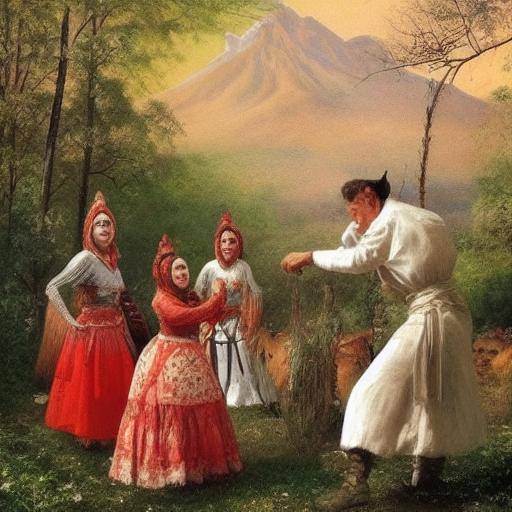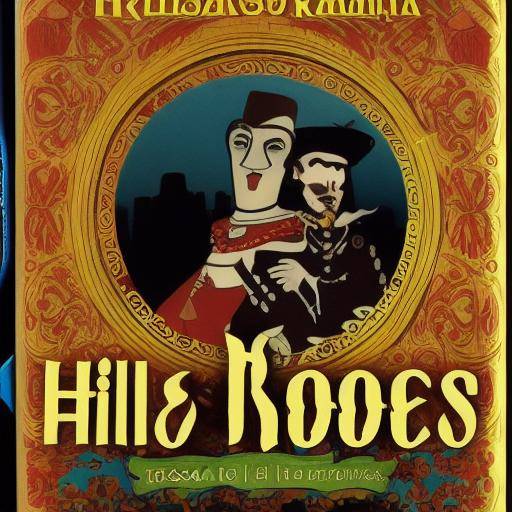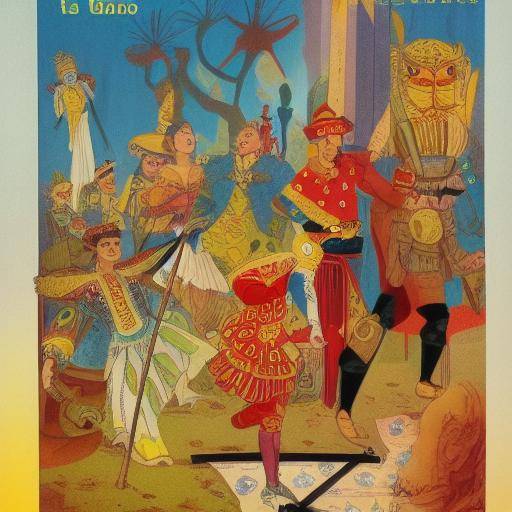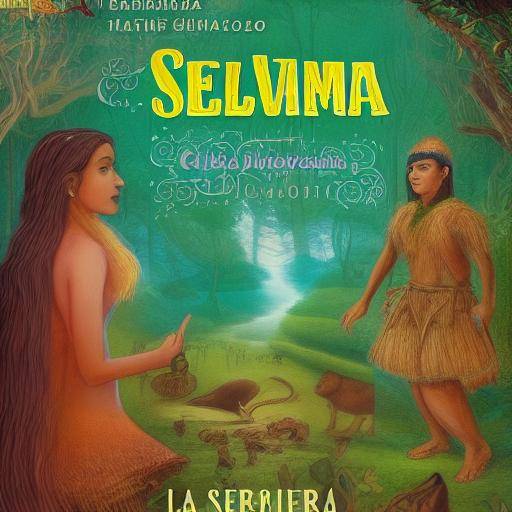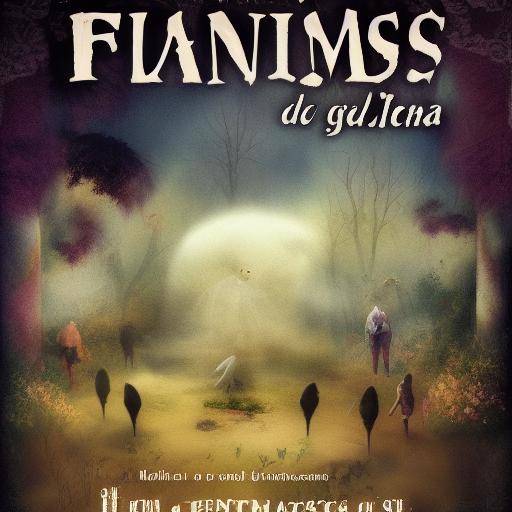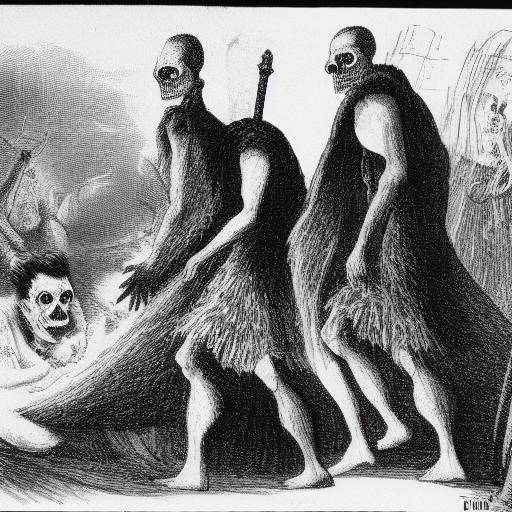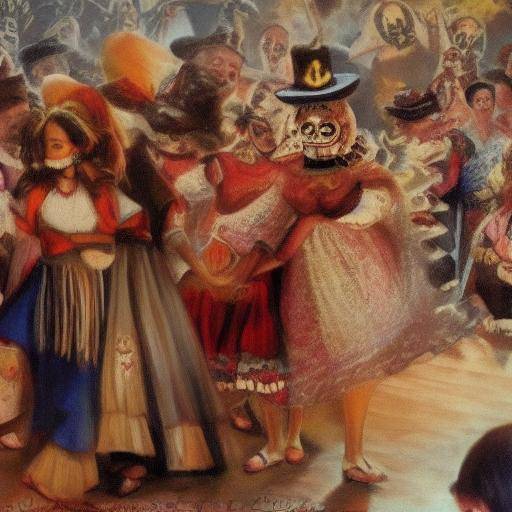
Introduction
Each culture has its own rites of passage that mark the transition from childhood to adulthood, and these ceremonies are impregnated with stories of courage and courage. In this article, we will explore the importance of courage in the rites of initiation, as well as the stories that arise from these significant events. We will discover how courage drives individuals to face the challenges of initiation rituals, and how these stories convey fundamental teachings to coming generations. Join us on this journey through the rich and diverse cultural tapestries that celebrate courage and resistance.
History and Background
The rites of initiation have existed throughout the history of humanity, marking the transition of one individual from one state to another, as from childhood to adulthood, from ignorance to knowledge, or from weakness to strength. These ceremonies have deep roots in culture and tradition, and have evolved over time to reflect the values and beliefs of each society.
One of the oldest manifestations of initiation rites goes back to tribal cultures, where young people had to face physical and mental tests to be accepted as full members of the community. These rituals not only marked the maturity of the individual, but also strengthened the link with the community and transmitted fundamental knowledge and values. In other cultures, the rites of initiation had a more spiritual character, involving religious ceremonies and rituals of purification to prepare the individual for his role in society.
Throughout history, initiation rites have undergone significant transformations, adapting to social, economic and political changes. However, its importance as a vehicle for transmitting fundamental teachings and values has endured over the centuries, generating stories of courage and courage that transcend time and space.
Initiation Rites in Different Cultures
Initiation rites vary widely in different cultures, but share a common purpose: mark the transition to adulthood and convey important knowledge and values. For example, in Australian Aboriginal culture, the initiation rite is marked by ceremonies that symbolize the union of the individual with the earth and the cosmos, as well as the transmission of ancestral knowledge. Young people are subjected to physical and mental tests to demonstrate their courage and readiness to assume important roles in the community.
In contrast, in Japanese culture, the initiation rite is symbolized by the ceremony of moving from high school to university. This transition is celebrated with rituals and ceremonies that honor the hard work and commitment of young people to their education. These rituals foster courage and perseverance, preparing young people for future challenges.
These examples illustrate the diversity of rites of initiation in different cultures, each with their own stories of courage and courage that reflect the fundamental values and beliefs of their societies.
Significant anecdotes in the Initiation Rites
The stories of courage and courage emerge from the rites of initiation, revealing the inner strength of individuals and the depth of their determination to overcome challenges. In the Masai culture of East Africa, young people go through an initiation rite known as "El Matarani". During this process, young people must demonstrate their courage in confronting physical evidence and demonstrating their emotional resistance. One of the highlights of this rite is the high jump, where young people must jump over a row of oxen to demonstrate their courage and determination. These stories of courage and overcoming have been transmitted from generation to generation, serving as a reminder of the legacy of courage that defines the Masai community.
In Amazonian culture, initiation rites involve physical and mental resistance tests in the transition of young people to adult life. The stories of young people across the Amazon River are told as a test of courage and survival. These narratives not only celebrate individual courage, but also strengthen the social fabric and transmit lessons of resilience and determination to generations to come.
In all these stories of courage and courage, the rites of initiation fulfill a double function: to prepare individuals for the challenges of adult life and to preserve the fundamental traditions and values of culture. These stories embody the very essence of what it means to be brave, challenging fear and adversity to achieve a state of maturity and fullness.
Deep analysis
The rites of initiation, in its essence, are a manifestation of courage and courage. By undergoing trials and challenges, participants demonstrate their willingness to confront the unknown, overcome personal limitations and assume adult responsibilities. These rituals promote personal growth, skills development, and strengthen community ties.
Courage is a central element in the rites of initiation, as it challenges individuals to overcome their fears and doubts. In facing difficult trials, participants demonstrate their courage and determination, thus gaining respect and recognition from the community. These stories of courage become part of the cultural legacy, transmitting vital lessons on the importance of courage in everyday life.
In addition, initiation rites provide an enabling scenario for the formation of significant stories that resonate with universal human experiences. The narratives of courage and courage that emerge from these rituals reflect the human struggle against adversity, the triumph over uncertainty and perseverance in the face of difficulty. These stories stir, inspire and teach, conveying fundamental values of resistance, determination and hope.
Comprehensive review
The rites of initiation have a lasting impact on the lives of those who experience them. These ceremonies transcend the purely individual, connecting the participants with their ancestors, their community and their traditions. The stories of courage and courage that emerge from the rites of initiation embody the very essence of cultural values and convey fundamental lessons that persist in time.
The importance of these stories lies in their ability to inspire and educate future generations. In narrating the feats of courage and courage of the participants in the rites of initiation, the teachings of the community are preserved and transmitted, thus strengthening the link between the past, the present and the future. These stories not only celebrate individual courage, but also reinforce collective identity and foster a sense of belonging and unity.
In addition, the stories of courage and courage born from the rites of initiation offer a unique perspective on human nature. These narratives reveal the intrinsic capacity of the human being to overcome challenges, adapt to new realities and grow in wisdom and strength. Ultimately, these stories constitute a valuable legacy that enriches human culture and experience.
Comparative analysis
Shortage, initiation rites and stories are intrinsically intertwined in an eternal cycle of overcoming, celebrating and transmitting knowledge. Courage encourages individuals to face the challenges of initiation rites, and these experiences generate significant stories that convey fundamental lessons to coming generations. These three dimensions are inextricably intertwined in the narratives that emerge from the rites of initiation, revealing the complexity and depth of the human condition.
The stories of courage and courage in the rites of initiation transcend cultural and geographical differences, offering a universal account of the human struggle against adversity and triumph over uncertainty. Through these stories, the very essence of courage, resilience and determination is revealed, inspiring and teaching generations of individuals everywhere in the world.
Practical Tips and Accessible Recommendations
For those who seek to cultivate courage and courage in their own lives, initiation rites offer timeless lessons and practical advice that transcend cultural barriers. Here are some recommendations to encourage courage and courage in everyday life, inspired by the stories of initiation rites:
- Accept the challenges: Find opportunities to face your fears and overcome obstacles, always with determination and courage.
- It values the community: Recognizes the importance of community ties and mutual support in addressing personal challenges.
- Learn from stories: Listen and reflect on others' stories of courage and courage, extracting meaningful lessons that can be applied to your own life.
- Cultivate the inner strength: Develop your emotional and mental resilience to face the challenges with courage and conviction.
These practical tips, based on the stories of courage and courage in the rites of initiation, offer a practical and meaningful approach to develop the courage in everyday life, and are based on the lessons transmitted throughout generations through these powerful stories.
Conclusions and FAQs (FAQs)
Conclusions
The stories of courage and courage in the rites of initiation transcend the limitations of time and space, offering a window to the universal human condition. These timeless narratives celebrate resilience, determination and personal growth, transmitting fundamental lessons that enrich our understanding of the world and strengthen the bonds that bind us as human beings.
By exploring the stories of courage and courage in the rites of initiation, we have seen how these narratives cross cultural and geographical barriers, revealing the very essence of human courage and resistance. These stories not only inspire and teach, but also strengthen the social fabric and transmit a legacy of wisdom and strength to future generations.
Ultimately, the stories of courage and courage in the rites of initiation remind us of the intrinsic capacity of the human being to face challenges, overcome obstacles and grow in wisdom and strength. These narratives, rooted in the rich tradition of the rites of initiation, continue to inspire, teach and transcend the borders of time and space, illuminating the way to a more courageous and hopeful future.
Frequently asked questions (FAQs)
1. What is the importance of courage in the rites of initiation?
The courage is fundamental in the rites of initiation, as it drives individuals to face trials and challenges, thus marking their transition to adulthood and transmitting fundamental cultural values.
2. How do the stories of courage transcend cultural barriers in the rites of initiation?
The stories of courage in the rites of initiation offer a universal account of the human struggle against adversity and triumph over uncertainty, transcending cultural and geographical differences.
3. What lessons convey the courage and determination of individuals in facing challenges and overcoming obstacles, inspiring future generations.
4. What are the benefits of cultivating courage in everyday life?
To cultivate courage in everyday life strengthens emotional and mental resilience, providing the ability to face challenges with determination and conviction, thus contributing to personal growth and the development of meaningful relationships.
5. What role do stories of courage play in transmitting knowledge and cultural values?
The stories of courage in the rites of initiation convey fundamental cultural knowledge and values through significant narratives that resonate with universal human experiences, thus strengthening cultural legacy and strengthening community ties.
6. How can we apply the lessons and tips derived from the stories of courage in our daily lives?
The lessons and tips derived from the stories of courage in initiation rites offer a practical guide to cultivate courage and courage in daily life, promoting resilience, personal growth and meaningful interpersonal relationships.
These frequent questions offer a comprehensive insight into the importance of courage in initiation rites and the lessons we can draw from these powerful stories.
In short, the stories of courage and courage in the rites of initiation transcend time and space, offering a deeper understanding of human condition and the universal qualities of courage and resistance. We hope that this article has inspired, taught and offered a meaningful vision of the importance of courage in our lives. In celebrating these stories, we celebrate the very essence of what it means to be human: confront challenges, overcome obstacles and grow in wisdom and strength.

